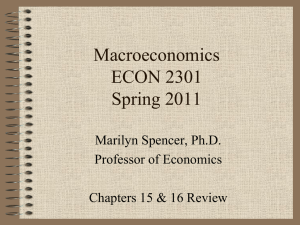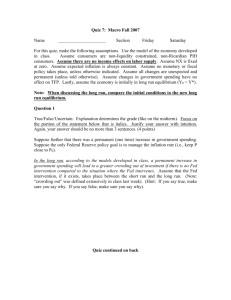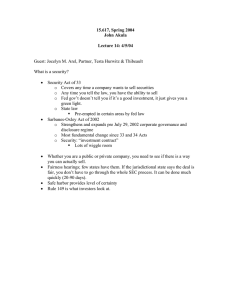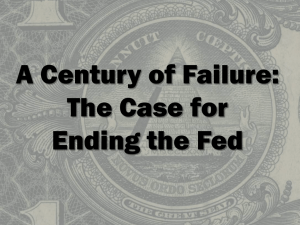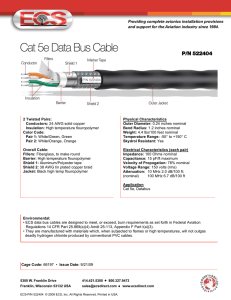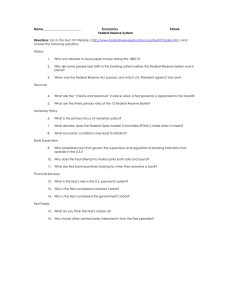Demand for Money & the Money Market
advertisement
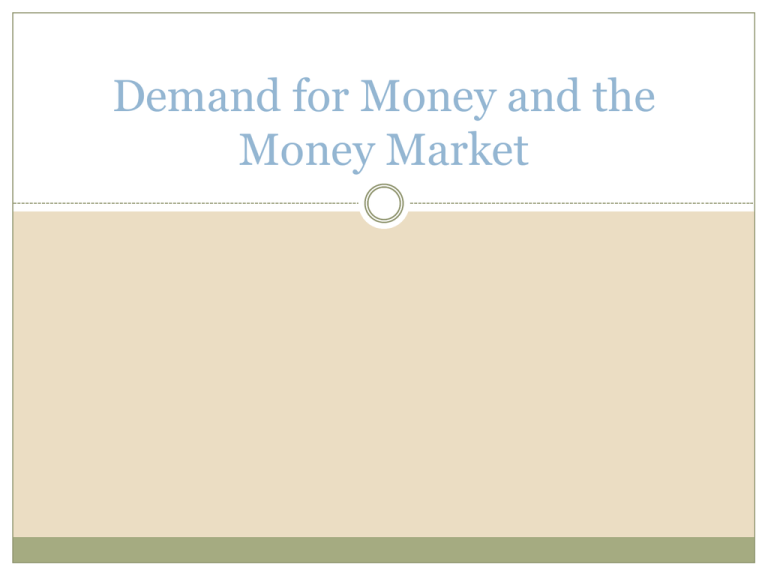
Demand for Money and the Money Market The Opportunity Cost of Holding Money People weigh decisions about how much money to have on hand Opportunity cost is interest that would be earned if money were invested, so opportunity cost changes when interest rates do Interest Rates & Opportunity Cost June 2007 June 2008 Federal funds rate 5.25% 2.00% One-month certificate of deposit (CD) 5.3% 2.5% 0 0 Currency Higher the interest rate, the higher the opportunity cost of holding money Lower the interest rate, the lower the opportunity cost of holding money *Short-term interest rates affect Money Demand The Money Demand Curve Because interest rate affects the cost of holding money, quantity of money that people want to hold is negatively related to the interest rate Note that vertical axis reflects nominal interest rate, as this includes both foregone real return & expected loss due to inflation Interest rates are used for comparison because interest is the gain on near-money assets Factors that Shift Money Demand Changes in Aggregate Price Level – Higher prices means that we need to hold onto more cash. Price increase and increase in money demand is proportional. 2. Changes in Income— As people accumulate more wealth, they will hold onto more money. 1. Factors that Shift Money Demand 3. Changes in Banking Technology– Increased access to deposits means less demand to hold cash on hand. Changes in Institutions– Changes in banking laws can increase/decrease demand for money. Money & Interest Rates Fed funds rate – Rate at which banks lend reserves to each other to meet the required reserve ratio, impacts interest rates Liquidity preference model of the interest rate shows how quantity of money supplied by the Fed varies with the interest rate Monetary Equation of Exchange Like the Savings-Investment Spending Identity, this is always true Depicts the relationship between money supply, income velocity, price level, and real output MV = PQ Changes in money supply result in changes in nominal GDP (P Q)

